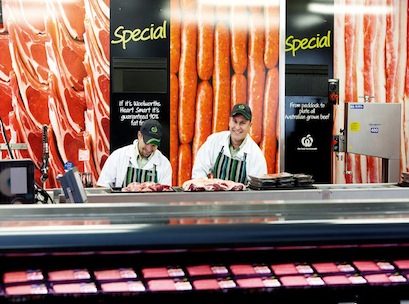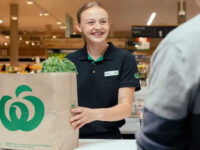 The days of the traditional butcher may be numbered, research shows.
The days of the traditional butcher may be numbered, research shows.
From January 2013 to December 2015, the proportion of Australian grocery buyers purchasing their fresh meat at the butcher’s in any seven-day period fell from 23.1 per cent to 17.9 per cent, according to new findings by Roy Morgan Research.
Despite the fall, statistics show the overall proportion of grocery buyers buying fresh meat anywhere has also fallen, from 75.6 per cent in 2013 to 70.7 per cent in 2015.
Aldi is the only major supermarket to have made any real gains in fresh meat sales over the last few years, with 9.6 per cent of grocery buyers over the age of 14 purchasing their meat there in an average seven days, up from 8.5 per cent in 2013 – an additional 265,000 meat shoppers each week.
Coles remained relatively stable, but Woolworths/Safeway, at 30.7 per cent to 27.3 per cent, and IGA, 8.1 per cent to 6.8 per cent experienced declines; as did markets and delicatessens – 9.1 per cent to eight per cent.
Butchers have seen the most significant decrease in purchase incidence, and, unlike supermarkets or markets and delis, do not have the scope to adapt to changing grocery buying habits with alternative products.
Butchers still hold a 23.5 per cent share of the total fresh meat market due to the amount their shoppers spend in an average seven days – $37. This is just ahead of the average fresh meat spend for those grocery buyers who make their purchase at markets or delicatessens at $34.
While Woolworths and Safeway account for a larger slice of the market with 27.3 per cent, their fresh meat customers spend substantially less, with a weekly average of $27 per shopper; as do those who buy their meat at Coles – $25 or 23.2 per cent market share – and IGA and Foodland – $22 or 5.4 per cent market share.
With its customers spending a weekly average of $22, Aldi’s dollar share of the fresh meat market is currently 7.6 per cent.
Andrew Price, GM Consumer Products at Roy Morgan Research, said Australian grocery buyers appear to be gradually moving away from purchasing fresh meat, and butchers are the most visible casualty.
“At the moment, despite their shrinking customer base, butchers are retaining a decent share of the overall fresh meat market due to the above average amount spent by those grocery buyers who continue to shop with them,” said Price. “But unless they can stem or reverse the decline in shoppers, it seems inevitable that butchers’ market share will erode”
“The news that Woolworths is changing the role of its staff butchers, bringing them to the front of store to sell pre-packaged meat and interact with customers rather than plying their trade out the back, indicates that the supermarket chain is endeavouring to pre-empt further declines,” he said.
“The number of Australians who are ‘eating less red meat these days’ now surpasses 10.2 million people (increasing by 293,000 people since 2013), and the number of those pursuing a totally or almost vegetarian diet also rose over the same period.”
“Knowing exactly who still buys fresh meat – from their demographics and attitudes to their shopping habits – is a good starting point, ensuring marketing communications are tailored to resonate with the right people,” said Price.















